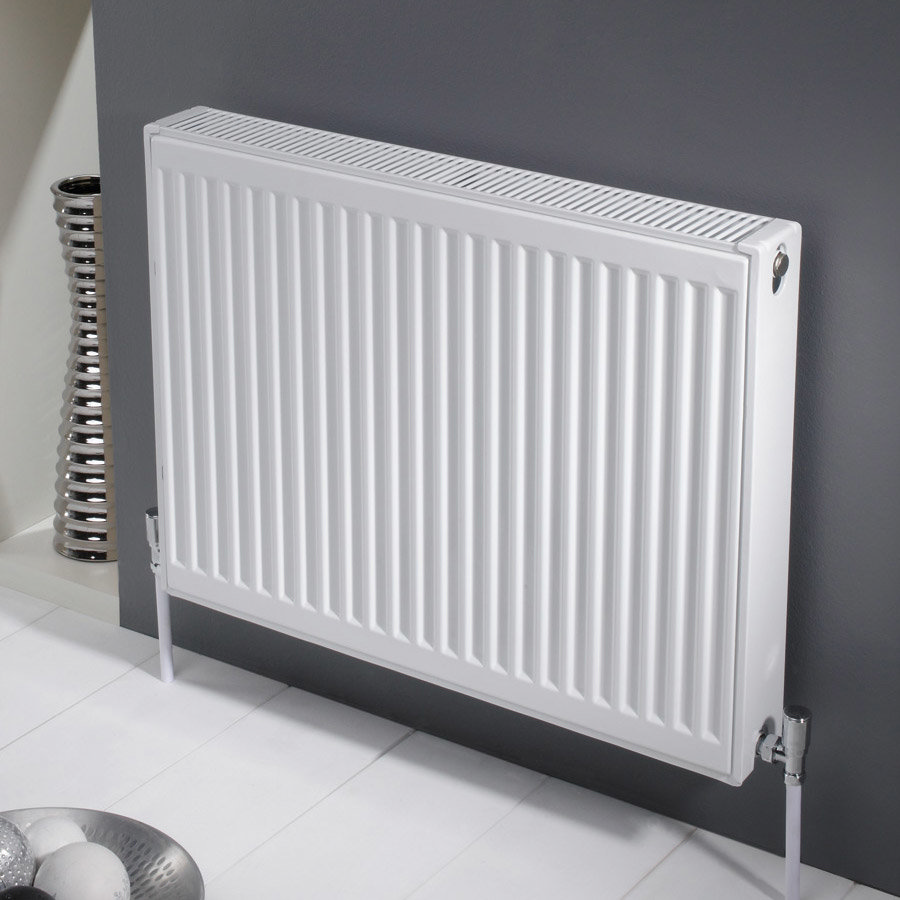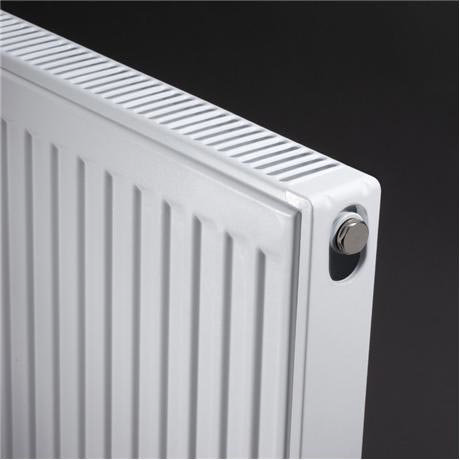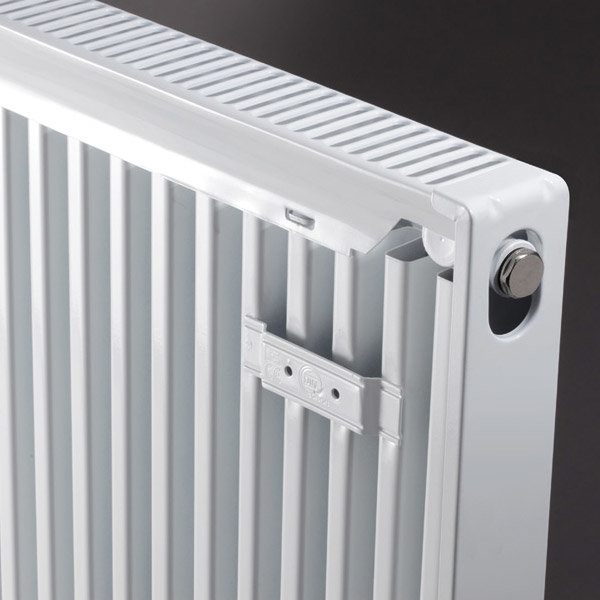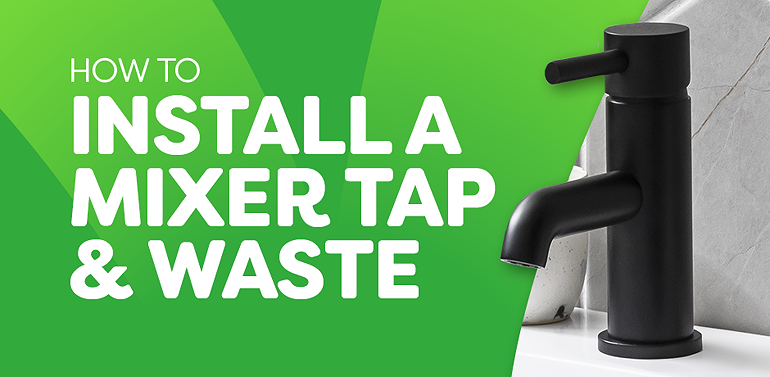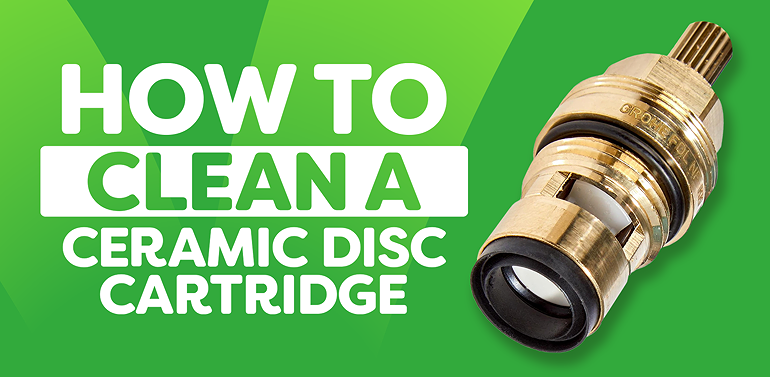EASTER OFFER: FREE DELIVERY ON ORDERS OVER £99!**
Delivery Offer Must End Soon!
difference between type 21 and type 22 radiators
Difference Between Type 21 and Type 22 Radiators
The difference between type 21 and type 22 radiators is important to know to ensure you're buying the correct heater to heat your room properly and efficiently.
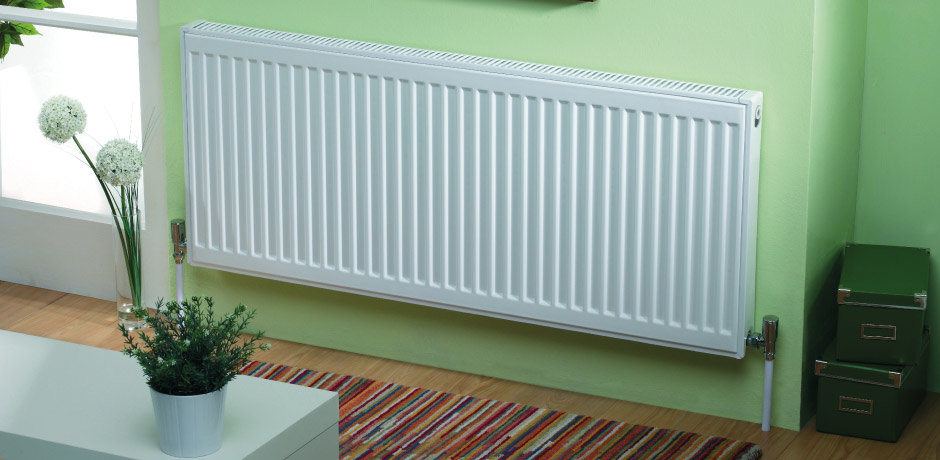
Adding a radiator to a room in your home will automatically add both style and warmth, creating a homely environment. Whatever room you're looking to furnish, be it a kitchen, living room or even a bathroom, there's a wide variety to choose from, one of which is a convector radiator.
If you’re planning to buy a convector radiator, then you’ve probably come across the terms Type 21 and Type 22, and maybe even Type 11 and Type 33. Unless you’ve bought this type of radiator before or you’re a heating engineer, then you’re probably wondering what the difference is between them. If you’re deciding between Type 21 (also known as P+) and Type 22 (also referred to as K2) convector radiators and are unsure which one you should buy, then read on to find our simplified explanation of the difference between them and which one you need.
Radiator Types
Before we look at the difference between Type 21 and Type 22 radiators, it’s ideal to know exactly what convector radiators are.
What is a convector radiator?
A convector radiator heats the room by way of convection. Rather than relying solely on pipes or tubes like other radiators, which are heated with water or oil, convector radiators heat up rows of fins, which are arranged in a variety of ways inside the radiator. This row of fins heats the body of air within the radiator and allows it to escape through vents, usually found at the top of the radiator itself.
Type 21 vs Type 22 radiators
The main difference between Type 21 and Type 22 radiators is the number of layers of fins, also known as the number of convectors. Type 21 convector radiators feature 2 panels that encase a single layer of fins. An easy way to remember the numbering system is that the first number represents panels, and the second number represents fins. 2 panels and 1 layer of fins is Type 21. Type 22, by using the same logic, would mean 2 panels and 2 layers of fins. To help remember this, it is best to say 'type two, one' rather than 'type twenty one' and 'type two, two' rather than 'type twenty two'.
Type 22 radiators typically generate much more heat than Type 21 radiators. This is due to the additional layer of fins inside.
What is a Type 22 Radiator?
Below is a drawing to show you the 2 rows of fins bounded between the two panels of a type 22 radiator.
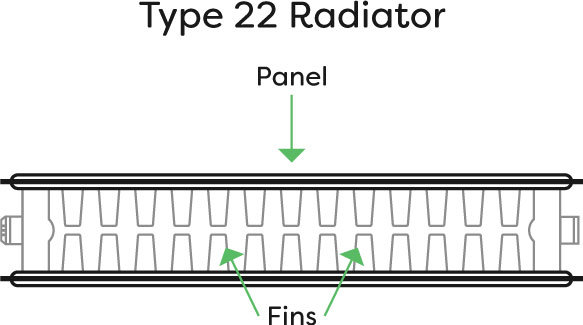
A type 22 radiator is a radiator with 2 panels and 2 layers of fins. More fins inside means there's more space required to store them. A Type 22 radiator is therefore generally wider than a Type 21 radiator. A typical Type 21 radiator will have a depth of about 70mm, whereas similar designed Type 22 radiators will have a depth of around 100mm.
What is a Type 21 Radiator?
Below is a drawing to show you the single row of fins sandwiched between the two panels of a Type 21 radiator.

A type 21 radiator is a radiator with 2 panels that encase a single layer of fins.
What is a double panel plus radiator?
To add to the confusion, you may have seen certain radiators being referred to as double panel plus radiators. However, this is simply another name for Type 21 radiators. Double panel plus radiators are your standard two-panel radiators, boasting a single set of fins.
Type 11 and Type 33 radiators
There are other types of convector radiators around that are less common than Type 21 and 22, these are Type 11 (also referred to as K1) and Type 33 radiators. Type 11 is a single panel radiator with a single layer of fins. It looks very similar to Type 21 convector radiators but has no back panel, which is usually hidden from sight.
Below is a drawing to show you the single row of fins fixed to the single panel of a Type 11 radiator.
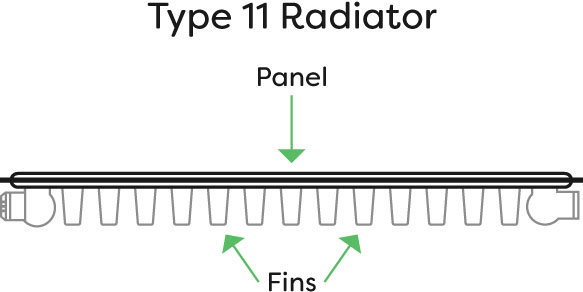
Type 33 convector radiators combine a Type 22 radiator and a Type 11 radiator to create the ultimate in heat output. Type 33 radiators have 3 panels encasing 3 layers of fins.
Below is a drawing to show you the 3 rows of fins bounded between the three panels of a type 33 radiator.
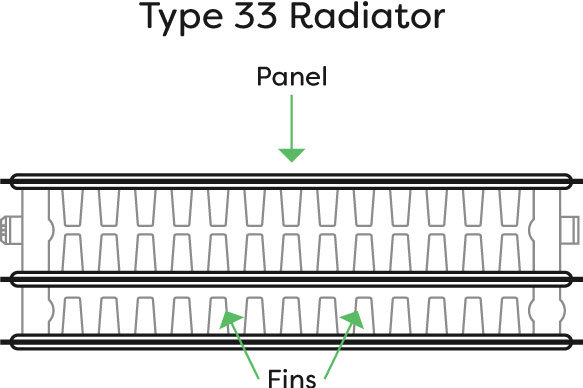
Choosing between Type 21 and Type 22 radiators
Now you know the difference between Type 21 and Type 22 radiators, it should be simple to buy the right one.
Why choose a Type 21 radiator?
A Type 21 convector radiator is ideal for smaller spaces. With a reduced depth, it means that you can still get excellent heat output without sacrificing too much space. If space is very tight and heat output isn’t a huge factor, then you could consider a Type 11 radiator, which is even slimmer.
Look out for compact convector radiators if you want to make the most of small spaces. A vertical convector radiator can be installed on a narrow wall, which may otherwise be unused space.
Why choose a Type 22 radiator?
A Type 22 radiator is the perfect choice if you have ample space and where higher heat output is essential. The increased depth of these convector radiators can feel a little bulky in smaller rooms. If heat output is your main focus and your room is big enough, then why not take a look at Type 33 radiators, which generate the highest heat output of all the options mentioned. Look out for higher BTU ratings if you want to heat up larger rooms.
We really hope you’ve found this simplified guide on the difference between type 21 and type 22 radiators helpful. If you do have any comments, then please get in touch or leave a comment. If you think others may find this information helpful, then please feel free to share it via email or social media by using the sharing buttons below.
